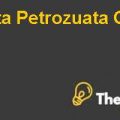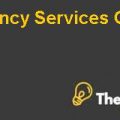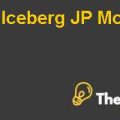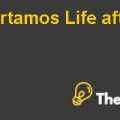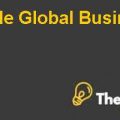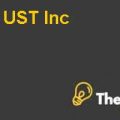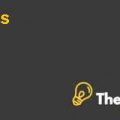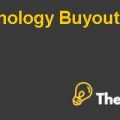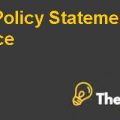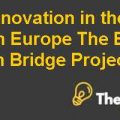Project 1 Case Solution
Introduction
In this case, Suzanne, a retiree with a passion for quilting, contemplates the prospect of launching a quilting business to fill her retirement days with creativity and potentially generate income. She faces a pivotal choice between two distinct investment options: Project A, involving the purchase of a Longarm Quilting Machine at $17,000, and Project B, which entails acquiring an Automated Quilting Machine costing $40,000.
The decision is influenced by factors such as expected sales growth, operating costs, taxes, and depreciation, as well as the time value of money. Through a rigorous financial analysis, we aim to determine which project, Project A or Project B, offers the most financially viable and rewarding path for Suzanne's quilting business venture.
Problem Statement
The primary problem in this case is that Suzanne, a retiree seeking to start a quilting business, must choose between two investment options, Project A and Project B, each involving different quilting machines with varying costs and capabilities. Suzanne needs to determine which project will be more financially rewarding and align with her retirement goals.
Situational Analysis
Project A
Project A involves the purchase of a Longarm Quilting Machine at an initial cost of $17,000. This machine has a quilting rate of 7.5 quilts per week and serves as the foundation for Suzanne's quilting business. Let's analyze Project A in greater detail:
| CASH FLOW ANALSIS | ||||||
| Year | 1 | 2 | 3 | 4 | 5 | |
| Sales Revenue | (Quilts * Price) | 27,300 | 28,665 | 30,098 | 31,603 | 33,183 |
| Material Cost | (Quilts * Material Cost) | 7,800 | 7,800 | 7,800 | 7,800 | 7,800 |
| Depreciation | (Depreciation) | 3,400 | 3,400 | 3,400 | 3,400 | 3,400 |
| Operating Expenses | (Sales * 0.05) | 1,365 | 1,433 | 1,505 | 1,580 | 1,659 |
| Earnings Before Tax | 14,735 | 16,032 | 17,393 | 18,823 | 20,324 | |
| Taxes | 3,094 | 3,367 | 3,653 | 3,953 | 4,268 | |
| Operating Cash Flow | 11,641 | 12,665 | 13,741 | 14,870 | 16,056 | |
| Disconted Cash Flow | 10,582 | 10,467 | 10,324 | 10,157 | 9,970 | |
| NPV | 51,499 | |||||
| IRR | 2.03 | |||||
| PI | 3.03 | |||||
| Cumulative Cash Flow | 11,641 | 24,306 | 38,046 | 52,917 | 68,973 | |
| (5,359) | 7,306 | |||||
| 0.58 | ||||||
| Payback Period | 1.58 | |||||
Sales Revenue:
Suzanne anticipates generating revenue by quilting customer quilts at a rate of 7.5 quilts per week. Assuming an average quilt size of 36x48 inches and a charge of 4 cents per square inch, her estimated annual sales revenue for the five-year period steadily increases due to a 5% annual growth rate. By the end of the fifth year, the projected sales revenue is approximately $33,183.32.
Material Costs:
For each quilt Suzanne quilts, she incurs material costs, including batting and thread, amounting to $20 per quilt. As the number of quilts increases with time, the material costs follow the same growth trend as sales, ultimately reaching $7,800 by the fifth year.
Depreciation:
Suzanne uses straight-line depreciation, with an annual depreciation expense of $3,400. This accounting method allocates the cost of the machine evenly over its useful life of five years.
Operating Expenses:
Suzanne accounts for operating expenses, equivalent to 5% of her sales revenue each year. These expenses cover miscellaneous costs related to running her quilting business, such as utilities, maintenance, and marketing.
Earnings before Tax (EBT):
EBT represents the profitability of the project before accounting for taxes. Suzanne's EBT increases each year as her sales grow and costs remain relatively stable.
Taxes:
With a tax rate of 21%, Suzanne pays taxes on her EBT, resulting in a tax expense that increases in tandem with her earnings.
Operating Cash Flow:
The operating cash flow is the cash generated by the project after accounting for all expenses, including taxes and depreciation. It gradually increases over the five-year period, reflecting the growing profitability of the project.
Discounted Cash Flow (DCF):
The DCF represents the present value of the operating cash flows, taking into account the time value of money. Suzanne uses a discount rate of 10% to calculate the NPV of the project.
Net Present Value (NPV):
The NPV of Project A, at a discount rate of 10%, is approximately $51,499.13. This positive NPV suggests that the project is expected to generate more cash flows than its initial investment, indicating its potential for profitability.
Internal Rate of Return (IRR):
The IRR for Project A is approximately 203%. This high IRR signifies a robust return on investment, exceeding the discount rate.
Profitability Index (PI):
The PI for Project A is approximately 3.03, indicating that for every dollar invested, Suzanne expects to receive more than three dollars in return.
Payback Period:
The payback period for Project A is approximately 1.58 years, meaning Suzanne can recover her initial investment in just over 1.5 years.
In summary, Project A exhibits strong financial performance with a positive NPV, high IRR, favorable PI, and a relatively short payback period. These metrics suggest that Project A is a financially attractive option for Suzanne's quilting business, indicating its potential for profitability and long-term sustainability.............
This is just a sample partial case solution. Please place the order on the website to order your own originally done case solution.

